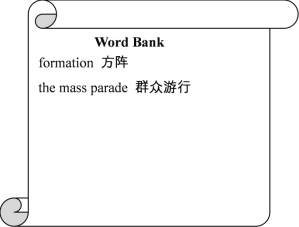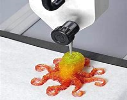题目内容
It's not WASTE until it is WASTED!
With the World Environment Day coming, our school is now requiring every student to form a habit of sorting the waste. Here in our schoolyard we lay four different colors of rubbish bins for different kinds of rubbish. The red is for harmful waste; the blue is for waste that can be recycled (循环再用); the green is for kitchen waste; the yellow is for other waste.
The followings are some instructions for you.
Glass: Empty bottles without caps can be recycled to make new glass bottles.
Warning: Mirrors and light bulbs (电灯泡) must not be included in the glass waste.
Paper: Newspapers, magazines, boxes must be clean enough to be recycled.
Warning: Paper tissues (餐纸) and wall paper are not recyclable as paper and should be kept separately.
PMD waste: Packaging made of Plastic or Metal and Drink boxes are used to make new packaging.
Warning: Plastic pots (e.g. yoghurt pots), plastic bags must not be included with the PMD waste.
Harmful waste: out-of-date drugs, used batteries (电池), paint and oil…
Besides, if you don't need your old bikes at all, our school volunteers will collect them. We're going to fix them up and then give them away to kids who don't have enough money for a bike.
To find out more about recycling, you can visit our school website.
1.According to the passage, __________ different colors of rubbish bins are laid in the schoolyard.
A.4
B.5
C.6
D.7
2.The fish bones (骨) should be thrown in the __________ bin.
A.red
B.green
C.blue
D.yellow
3.From the passage, we can see that __________ are harmful to the environment.
A.paper tissues B.empty bottles
C.drink boxes D.out-of-date drugs
4.If you give your old bike to the volunteers, it will be __________.
A.sold to collect money for the poor kids
B.fixed up and given back to you for free
C.fixed up and given away to the poor kids
D.given away immediately to the poor kids
5.The main purpose of this passage is ________.
A.to look for volunteers for waste sorting
B.to introduce waste sorting to the students
C.to introduce the World Environment Day
D.to advertise glass, paper and plastic products
 天天向上一本好卷系列答案
天天向上一本好卷系列答案 小学生10分钟应用题系列答案
小学生10分钟应用题系列答案


